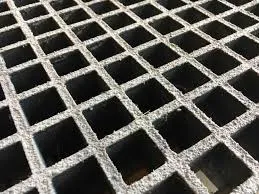
-
 Afrikaans
Afrikaans -
 Albanian
Albanian -
 Amharic
Amharic -
 Arabic
Arabic -
 Armenian
Armenian -
 Azerbaijani
Azerbaijani -
 Basque
Basque -
 Belarusian
Belarusian -
 Bengali
Bengali -
 Bosnian
Bosnian -
 Bulgarian
Bulgarian -
 Catalan
Catalan -
 Cebuano
Cebuano -
 China
China -
 China (Taiwan)
China (Taiwan) -
 Corsican
Corsican -
 Croatian
Croatian -
 Czech
Czech -
 Danish
Danish -
 Dutch
Dutch -
 English
English -
 Esperanto
Esperanto -
 Estonian
Estonian -
 Finnish
Finnish -
 French
French -
 Frisian
Frisian -
 Galician
Galician -
 Georgian
Georgian -
 German
German -
 Greek
Greek -
 Gujarati
Gujarati -
 Haitian Creole
Haitian Creole -
 hausa
hausa -
 hawaiian
hawaiian -
 Hebrew
Hebrew -
 Hindi
Hindi -
 Miao
Miao -
 Hungarian
Hungarian -
 Icelandic
Icelandic -
 igbo
igbo -
 Indonesian
Indonesian -
 irish
irish -
 Italian
Italian -
 Japanese
Japanese -
 Javanese
Javanese -
 Kannada
Kannada -
 kazakh
kazakh -
 Khmer
Khmer -
 Rwandese
Rwandese -
 Korean
Korean -
 Kurdish
Kurdish -
 Kyrgyz
Kyrgyz -
 Lao
Lao -
 Latin
Latin -
 Latvian
Latvian -
 Lithuanian
Lithuanian -
 Luxembourgish
Luxembourgish -
 Macedonian
Macedonian -
 Malgashi
Malgashi -
 Malay
Malay -
 Malayalam
Malayalam -
 Maltese
Maltese -
 Maori
Maori -
 Marathi
Marathi -
 Mongolian
Mongolian -
 Myanmar
Myanmar -
 Nepali
Nepali -
 Norwegian
Norwegian -
 Norwegian
Norwegian -
 Occitan
Occitan -
 Pashto
Pashto -
 Persian
Persian -
 Polish
Polish -
 Portuguese
Portuguese -
 Punjabi
Punjabi -
 Romanian
Romanian -
 Russian
Russian -
 Samoan
Samoan -
 Scottish Gaelic
Scottish Gaelic -
 Serbian
Serbian -
 Sesotho
Sesotho -
 Shona
Shona -
 Sindhi
Sindhi -
 Sinhala
Sinhala -
 Slovak
Slovak -
 Slovenian
Slovenian -
 Somali
Somali -
 Spanish
Spanish -
 Sundanese
Sundanese -
 Swahili
Swahili -
 Swedish
Swedish -
 Tagalog
Tagalog -
 Tajik
Tajik -
 Tamil
Tamil -
 Tatar
Tatar -
 Telugu
Telugu -
 Thai
Thai -
 Turkish
Turkish -
 Turkmen
Turkmen -
 Ukrainian
Ukrainian -
 Urdu
Urdu -
 Uighur
Uighur -
 Uzbek
Uzbek -
 Vietnamese
Vietnamese -
 Welsh
Welsh -
 Bantu
Bantu -
 Yiddish
Yiddish -
 Yoruba
Yoruba -
 Zulu
Zulu
frp damper
Understanding FRP Dampers Enhancing Structural Resilience
Fiber Reinforced Polymer (FRP) dampers have emerged as a revolutionary technology in the field of structural engineering, particularly in seismic design and vibration control. These advanced materials combine the strength of fibers, like carbon or glass, with the versatility of polymers, creating robust yet lightweight dampers capable of significantly improving a structure's resilience against dynamic forces.
What Are FRP Dampers?
FRP dampers are devices designed to absorb and dissipate energy during events such as earthquakes, strong winds, or vibrations caused by machinery. Unlike traditional dampers made from steel or concrete, FRP dampers leverage high-performance composite materials that offer superior durability and resistance to environmental factors. Their unique properties make FRP dampers ideal for applications in a variety of structures, including bridges, high-rise buildings, and industrial facilities.
Benefits of FRP Dampers
1. Lightweight Design One of the most significant advantages of FRP dampers is their lightweight nature. This reduces the overall dead weight of the structure, making it easier and more economical to transport, install, and maintain.
2. Corrosion Resistance Unlike metals, FRP materials do not corrode when exposed to environmental elements, such as moisture, chemicals, or saline environments. This longevity ensures lower maintenance costs and extends the lifespan of the structures they are integrated into.
frp damper

3. High Strength-to-Weight Ratio FRP dampers offer a remarkable strength-to-weight ratio, providing effective energy dissipation without adding excessive mass to the structure. This property is particularly beneficial in seismic zones where minimizing inertia is crucial.
4. Versatility FRP dampers can be designed in various shapes and sizes, allowing engineers to customize their applications according to specific structural requirements. This flexibility makes them suitable for both retrofitting existing structures and for new constructions.
Applications in Structural Engineering
The implementation of FRP dampers has become increasingly common in seismic-prone regions around the world. For instance, many modern skyscrapers and bridges incorporate these dampers to enhance their ability to withstand earthquakes. Additionally, FRP dampers are utilized in industrial settings to mitigate vibrations from heavy machinery, thus protecting both equipment and personnel.
Conclusion
As the demand for more resilient structures grows in an era marked by climate change and increasing urbanization, FRP dampers stand out as a critical innovation in structural engineering. Their lightweight, durable, and corrosion-resistant properties not only enhance the safety and longevity of buildings and infrastructure but also contribute to sustainable construction practices. As technology progresses, the application and development of FRP dampers are poised to expand, offering improved solutions for managing dynamic forces and protecting communities worldwide.
Latest news
-
Exploring the Benefits of Top Hammer Drifter Rods for Enhanced Drilling PerformanceNewsJun.10,2025
-
High-Precision Fiberglass Winding Machine for GRP/FRP Pipe Production – Reliable & Efficient SolutionsNewsJun.10,2025
-
FRP Pipes & Fittings for Shipbuilding - Corrosion-Resistant & LightweightNewsJun.09,2025
-
Premium FRP Flooring Solutions Durable & Slip-ResistantNewsJun.09,2025
-
Premium Fiberglass Rectangular Tanks Durable & Lightweight SolutionNewsJun.09,2025
-
Tapered Drill String Design Guide Durable Performance & UsesNewsJun.09,2025









